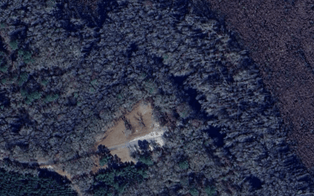With the deadly tornadoes that have repeatedly terrorized the nation this year, INSIDE EDITION covers the facts and fiction that you need to know about the wild storms.
With the latest Massachusetts cyclone comes yet another grim reminder of the deadly perils of twister season. You might want to ask yourself: are you really as savvy about tornadoes as you should be?
There are many twister misconceptions, and INSIDE EDITION did some research to help you ensure your safety.
Myth #1: A highway overpass is a good place to take shelter from a tornado.
The overpass theory may be based on famous footage shot by a news crew in Kansas, who hid under a highway bridge as a twister tore through their area. Although the crew lived to tell the tale, it seems that they got lucky.
An overpass actually funnels the tornado through a narrow space, increasing the wind speed. According to the National Weather Service, if you are caught in the open, a ditch is the best place to seek shelter.
Myth #2: The southwest corner of your hiding place is the safest position.
A safety film from the 1950s is largely responsible for promulgating this incorrect advice. Experts now say that this tip is wrong.
"Where you want to be located if a tornado is approaching is in the centermost part of your home, your school, wherever you are. You want as many walls between you and the outside as possible," a Red Cross representative told us.
Myth #3: Opening your windows equalizes pressure and minimizes damage.
"Opening a window, all it really does is delay the time that you have to save your life. It's absolutely not worth worrying about," the expert said.
Myth #4: Tornadoes don't hit cities.
As we learned from the twisters that just tore through Massachusetts, cities are not immune to such storms.






